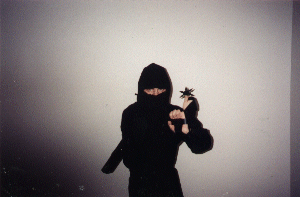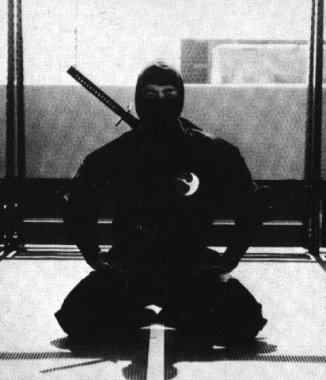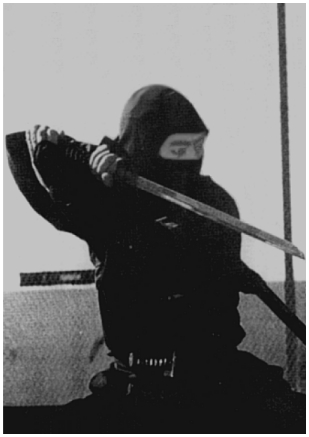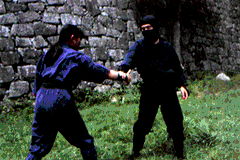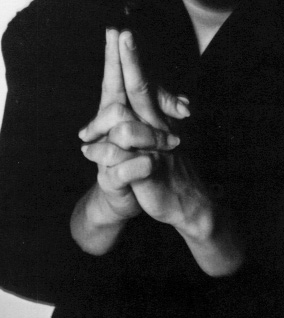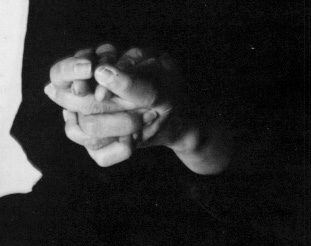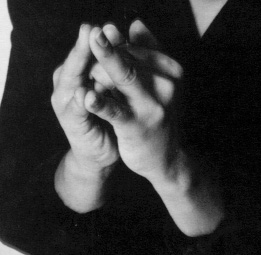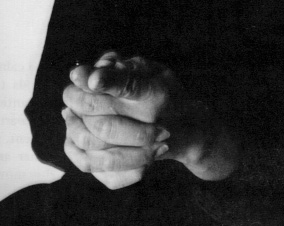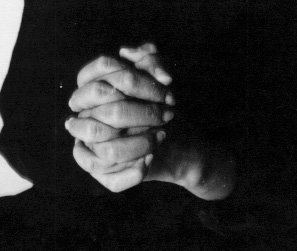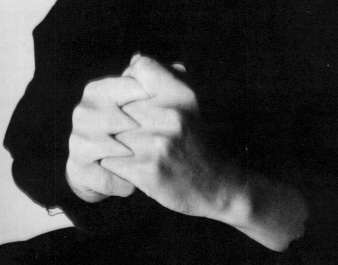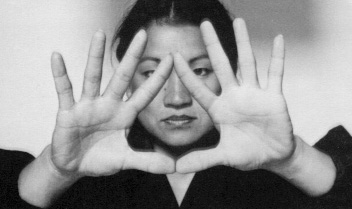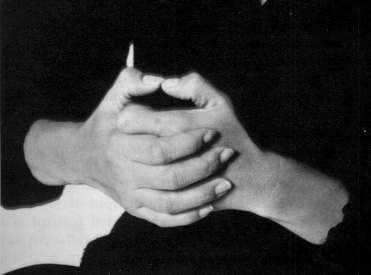|
NIN-PO :
Ninjutsu is best described as the collection of skills utilized by the Ninja while
Ninpo, often referred to as "the higher order of Ninjutsu, " implies a philosophy for living based on the principles of
Nin.
Nin translates into patience, but can also imply perseverance, or stealth. The Japanese character for Nin consists of two parts or radicals. The upper radical is called yaiba which refers to the cutting edge of a blade. The lower radical can be read either as kokoro or shin, both of which mean heart.
The character po, which implies natural law, is used rather than do (i.e.. judo, kendo,
aikido,etc). Referring to our art as Ninpo rather than Ninjutsu stresses training which is concerned with the internal development of the individual's character along with the technical skills of martial training. It isn't enough just to know techniques, it is where your heart and spirit are as a person that is important. For this reason, Ninpo stresses philosophic and spiritual training in conjunction with the physical training. This refinement of one's spirit is known in Japanese as seishinteki
kyoyo.
Ninpo is concerned with the defense of the whole self, and recognizes that defense against a life-threat is dealt with by the spirit as much as with physical technique. The Mysterious Art of Ninjutsu :
Ninjutsu is a Martial Art based upon the use of strategy, fighting tactics of mountian warrior monks and the philosophy of Buddhism, all working together in accordance with the laws of nature.
The ninja were known throughout the centuries as dangerous men, like an early form of spy. Their Art came from the idea that as they would never turn their back on any action for selfish reasons, they were able to withstand extremely difficult training and were themselves capable of great sacrifice.
The origin of the Ninja is uncertain. It seems to go back as far as ancient China which had already developed the science of spying. One of the greatest Chinese strategists in the field, named Sun
Tzu, wrote a book of the same name: Sun-Tzu, a book about war strategy and a sort of spy manual which seems to foreshadow the science of the Ninja.
In Japan itself, it was not until about 600 A.D. and especially at the end of the Heian period (1185) that the art of the Ninja or ninjutsu evolved. At that time three Yamabushi came to power in Kyoto. Yamabushi means 'mountain warrior'. In Japan there were tens of thousands of Yamabushi who, faithful to Shinto tradition, venerated the mountain and devouted at least 100 days a year to it in prayer and asceticism. The Yamabushi masters developed parapsychological knowledge and techniques of resisting pain, the cold, fire,
ect.
The Ninja are not Yamabushi, however they too were men of the mountain, not because they venerated it but because most of them came from the steep remote mountains of the Iga and Koga regions. Cut off like wolves in these areas, they could more easily resist the different governments which, from time to time, tried to destroy them. In the home of a famous Ninja from
Iga, the bones of 80 corpses have been found, thrown into an oubliette by a trap door just inside the main entrance.
It is probable that the Ninja themselves had a number of secrets common to the Yamabushi. These secrets mainly concerned the same areas: parapsychological knowledge, resistance to pain, etc., essentially exploited by their concern for effiency. Written in the form of a code which was indecipherable to the unitiated, these secrets, which in modern times have been commited to the computers of the Japanese spy service, have been revealed, only to be shrouded once more in great secrecy.
In this strange world in fact, the use of parapsychological techniques is the order of the day more than ever before. The Japanese notion of michi (or do) expressing the force of energy or intrinsic power which exists in all things, is still relevant. To capture this force, whatever its nature, offers the possibility of developing different powers, of using a great variety of hypnotic 'tricks', especially as the boundary between real power and trickery was more often than not very imprecise as far as the Ninja, accomplished masters of deception, were concerned.
A Ninja was neither an exceptional nor an ordinary man, rather a different sort of man, in so far as his long and very arduous training began at an early age, in childhood. He thus learnt to disjoint the bones in his body in order to squeeze thhrough narrow railings, to climb trees like a cat, to resist cold, to hide under water by breathing through a reed, to make himself invisible or disappear behind a smoke screen and to walk noiselessly on water. In a word, all his actions were aimed at finding the point of least resistance at all levels and at using it to conquer and destroy his enemies.
A Ninja's training consisted of not The Ninja's weapons are numerous: the most well known being the shuriken, small iron devices of many different shapes such as crosses, six or eight sided stars, triangles, pointed instruments, etc. Exceedingly sharp and with poisoned points, these weapons could silently strike an enemy from a distance. The shuko or sort or iron gauntlet studded with sharp points on the palm of the hand, enabled the Ninja to attack sentries, to climb trees or walls. Armed with these gauntlets and hooked
sandels, the Ninja could scale walls and penetrate the most heavily defended places.
The Ninja's favourite weapon was the Kyotetsu-Koge, a sort of dagger with two blades, one curved. It was joined to a metal ring with a rope which could be wrapped around an enemy's arm or leg, and bring him down.
Legends tell on Ninja's disappearing in a cloud of smoke. One of their tricks in fact consisted of letting off a smoke bomb at an opportune moment and so disappearing from the enemy's sight. They also knew how to walk very fast sideways, so that they could skirt walls in the shade with their back to them in readiness for any attack.
The Ninja played an importent role in destroying the Daimyo who opposed the Tokugawa. Each side had its Ninja and it is probable that the Ninja could generally change camp and master according to the fortunes of the battle. Whatever happened, they were bound to absolute secrecy and would not talk no matter how much pain they were dealt. Once captured, Ninja's sometimes managed to disfigure themselves to become unrecognizable, before commiting suicide.
The Ninja were divided into three groups: the Jonin, he who makes contact and offers his services, his assistant or chunin and the
genin, the actual agent who carries out the missions. The last was considered to be the lowest class of Japanese society. Once captured, he was usually tortured and dismembered.
The general consensus of the Ninja in comparison to the Samurai was the the Ninja had no
honour, but in fact their honour was equal to that of the rival Samurai. The Ninja believe ego, pride and honour can mean the difference between life and death, failure and success. If ego , pride or honour had to be sacrificed to achieve a desired goal then it was done without question.
The most significant code which has been the key to the Ninja's survival and success is Ninmujoku (Ninja has no shame). The ancient Samurai traditions despised the Ninja for this very motto, because they were bound by chains of honouristic virtues. Ninmujoku is of no use
without the right frame of mind and intention. One cannot use this theory for one's own benefit, because it is not concerced with the ideals of self gain but rather the benevolence of the
organisation. Seishin - the right consciousness, kept the Ninja on the right path, ensuring they would not become thieves, murderers or enemies of the people. Without Seishin the Ninja would not be able to justify their actions and would be classified as nothing but cold blooded murderers.
A Ninja's training not only consisted of learning the art of Ninjutsu but also learning the fighting styles of the Samurai. The basis of Ninjutsu can be divided into four
catergoies:
1. Fighting System 
 
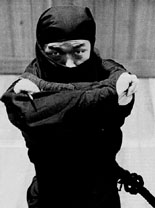
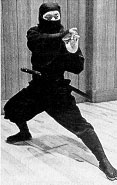
Taijutsu which incorporates: Bugei Juhappan (18 Samurai Arts) and Ninjutsu Juhakkei (18 Ninjutsu Arts).
Bugei Juhappan Nijutsu Juhakkei
Jiu-jutsu - Art of self defence
Ken-jutsu - Art of the wooden sword (Boken)
Iai-jutsu - Art of drawing
Kusarifundo-jutsu - Weighted chain technique
Kusarigama-jutsu - Sickle and chain technique
Bo-jutsu - Art of full lenght staff
So-jutsu - Spearmanship
Naginata-jutsu - Art of the halberd
Suiren-jutsu - Art of swimming
Ba-jutsu - Horsemanship
Kisha-jutsu - Art of archery on horseback
Jo-jutsu - Art of the three foot staff
Kyu-jutsu - Archery
Yoroi kumiuchi-jutsu - Art of armour combat
Jutte-jutsu - Art of the jutte (Iron rode) including
Tessen-jutsu (Iron fan technique)
Hobaku-jutsu - Art of rope binding
Ho-jutsu - Art of firearms (rifle/gun/cannon technique)
Shuriken-jutsu - Art of throwing blades
Seishin shugyo - Art of spiritual refinement
Tai-jutsu - Art of unarmed combat
Hiken-jutsu - Secret art of the sword (Tanto, Kodachi,
Odachi, Ninjato, Choken & Nito)
So-jutsu - Spearmanship
Naginata-jutsu - Art of halberd
Nagamaki-jutsu - Art of battlefield halberd
Kusarigama-jutsu (Kyoketsu shoge) - Sickle and
chain technique
Rokushakubo-jutsu - Art of the six foot staff
Sanjakubo-jutsu, Jo-jutsu & Hanbo - Art of the half
and three quarter staff
Shuriken-jutsu - Art of throwing blades
Kisha-jutsu - Archery of horseback
Inton-jutsu - Art of special disappearing
Hoko-jutsu - Art of stalking
Henso-jutsu - Art of disguise
Kakushibuki - Art of secret weapon
Gunryaku Heiho - Strategies
Tenmon & Chimon - Strategy of Heaven and Earth
Ninyaku - Special medicine and drug technique
The Samurai had to know and perfect the Bugei Juhappan. The Ninja criteria was more severe, they had to be a skilled practioner of Ninjutsu Juhakkei and Bugei Juhappan known as Ninjutsu Sanjurokkei (36 arts and techniques). The knowledge of these arts and techniques only
emphasized the Ninja's formidability.
2. Organisation
Skills associated with networking and information gathering.
3. Strategy
Encompassing espionage / assassination / spying
4. Shugendo/Mikkyo
Attainment of supernatural powers and wisdom. The development of intuition
(Jintsuriki).
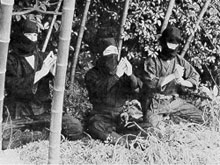 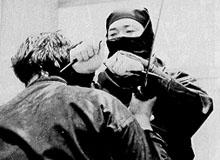
Skills :
Since the Ninja had to survive in nature, they became trained naturalists capable of distinguishing edible, medicinal and poisonous plants, trapping, preparing and cooking animals, building shelter, finding water, and making fire.
A few methods of finding water were by studying the insects in an area. For example, if there was a high concentration of ants or crickets, he knew there was water nearby. Another way of finding water was by recognizing the kinds of plants that live near water. If the Ninja found any of those plants, he knew water was near.
Kuji-in :
Kuji-in is a type of ninja training with its roots in
Daoism. It is more of an energy kind of thing.
"The term [Shuji Shuriken] also refers to Esoteric practices, such as "cutting the nine ideographs" (namely, reciting nine majic words) for protection. Originally Taoist, the practice of "cutting the nine ideographs" was taken up by yin-yang
practioners, Esoteric Buddhists, Japanese swordsmen, and ninja. Some swordsmen and ninja executed it at daybreak every day, and many did so before an actual combat or mission.' Hiroaki Sato, trans., The Sword & The Mind, 81."
Kuji-in may be used in two different ways: alone or combined.
Ways of using the Kuji :
Well, the first way is to use them individually when you need them. For example:
You are out in the wilderness chopping wood. You are a skinny person with no muscle mass, and the wood is too heavy to carry. You make the Kuji for Physical strength with your hands, and summon Chi to the sign, while focusing on the element of the
Kuji. You easily carry the wood back to your cabin.
The next way is to meditate every day, and go through each hand sign while focusing on each purpose. At the end of this practice you make a specialized hand sign (make it up) while focusing on shutting in all the energy from each element into you.
Now, when you get into a fight....right before it, use the Kuji you made up to bring out all the energy you stored. This will help you greatly in a fight.
"Kuji -in"
:
Is the spiritual and mental strength the ninja possessed in the form of hand signs. These hand signs were believed to be able to channel energy. The hand signs were taken from the practices of the early Buddhists.
The Kuji-in was used to build confidence and strength in the ninja. It was also believed to enhance the senses of danger and foresee death for the ninja.
In Kuji-in the thumb represents the source of power (Ku), and the fingers represent the four elemental manifestations. They are Chi (earth - solids), Sui (water - liquids), Ka (fire - combustion) and Fu (wind - gases).
There are 81 hand symbols, total, but there are 9 primary ones: Rin, Hei,
Toh, Sha, Kai, Jin, Retsu, Zai, and Zen. Each symbol invokes different strengths and abilities in a trained ninja. Rin brings strength to the mind and body; Hei generates psychic power in order to mask one's presence; Toh enables the ninja to reach a balance between the solid and liquid states of the body, which leads to a greater harmony with the universe; Sha is used to heal oneself or another; Kai gives complete control over the body's functions, enabling one to slow the heart rate, endure extreme heat and cold, etc. Jin increases the mind's telepathic powers, giving a highly trained Ninja the ability to read the character of another; Retsu gives telekinetic powers, enabling a ninja to stun an opponent with a shout or touch. Zai extends the harmony gained by merging with the universe. Zen brings enlightenment and understanding. These symbols take an entire lifetime to truly master.
Kuji Kiri
:
Kuji Kiri (energy channeling, hypnotic) Ninjitsu is a hybrid system of ninjitsu that also employs techniques and theory from Jiu-Jitsu and
Kenpo. The stealthy ways of the ninja (including sections on invisibility, smoke bombs, & vanishing) come to life in this system.
This system includes seven belt levels of training to the first level of Black Belt. These seven levels are demonstrated on a 5 tape serious.
This system includes seven belt levels of training to the first level of Black Belt. These seven levels are demonstrated on a 5 tape serious.
The system includes body movement of a Ninja. A section on blinding powders, weapons, and more. Kuji Kiri has influence from Jiu-Jitsu and Kenpo as well. The course os instructed by Soke Joshua Carr who has studied the ways of the Ninja for several years. Soke Carr holds Black Belts in Kenpo and
Jiu-Jitsu, as well as his rank in Ninjitsu. Soke Carr has devised the Kuji Kiri Ninjitsu system to help martial artist realize they should not limit themselves to one style, rather to study many styles so they may be true warriors, should the need arise.
NINPO :
"NINPO is a hybrid system of ninjitsu that also employs techniques and theory from Jiu-Jitsu and
Kenpo. The stealthy ways of the ninja (including sections on invisibility, smoke bombs, & vanishing) come to life in this system.
Ninpo is more commonly known as ninjutsu, or the warrior arts of the ninja but the term Ninpo is used as it has a deeper significance. The black clad assassin disappearing in a cloud of smoke, which usually springs to mind when talking of Ninja has nothing to do with the reality of learning true Ninpo Bugei. Ninpo is a traditional, non-competitive Japanese Martial Art whose history stretches back over many centuries. It contains Striking skills, joint locks, throws, grappling, and several different weapons.
Genshirin Ninpo encompasses many different schools, each of which has a unique feeling and emphasis. The three pillars of the art are called Taijutsu (Unarmed techniques),
Bo-jutsu (wooden staff techniques), and Biken-jutsu (Sword techniques), but there are many other disciplines which make up the complete Art. As a novice you will start by learning Taijutsu which is the backbone of
Ninpo. The emphasis is placed on defending yourself from an attack such as a punch, kick or grab. The techniques are taught in a Japanese fashion as they have been for hundreds of years.
Why learn Ninpo?
Ninpo is not an easy Martial Art to learn. It takes about 4 years to get to Black Belt level under proper tuition. The training can be physically and sometimes mentally demanding, however, it is not an elitist pursuit. It is well within the capability of any well balanced, motivated individual to become skillful. The Japanese character
"nin" in Ninpo means patience and perseverance which is the essence of success with this martial art. There is a great deal of satisfaction to be had from studying Ninpo along with the practical benefits of learning effective self-defense are the tangible benefits, including, agility, alertness and physical fitness. It can also be a lot of fun.
Please
click here to see next page NINJA page-3 
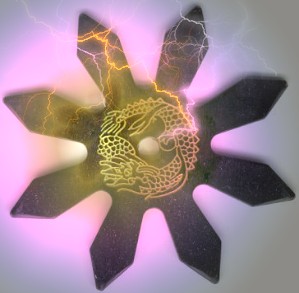


|

